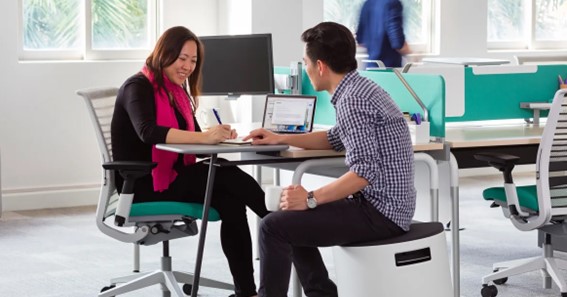This article outlines the essential steps to expand office space while maintaining quality and minimising disruption efficiently. When an organisation’s growth requires additional space, the key question is how to add the space quickly, ensuring a conducive work environment without significant disruption to ongoing operations.
Modular construction emerges as an ideal solution. It is more cost-effective than traditional construction, and most of the building is constructed and fitted out offsite. The controlled environment of a factory setting ensures superior quality control, and the building arrives with all services ready for connection. Modular construction offers the flexibility to relocate or sell the building as needs change.
To achieve speed, quality, and cost-effectiveness, follow these three steps:
- Define your requirements: Identify the factors determining the necessary space and facilities for the new offices. Consider the number of people working in the space, determining the required square footage. Assess whether meeting spaces for employees and external clients and private areas for functions like HR are needed. Determine whether separate staff and visitor toilets are necessary and if a staff kitchen area is required. Additionally, consider if the new offices can address accessibility issues present in legacy buildings. Modular buildings can be configured internally to suit specific needs and business requirements, allowing for the creation of offices, meeting rooms, and other facilities while ensuring acoustic insulation and privacy.
- Source from existing stock: Opting for an existing building that can be refurbished to meet specifications is quicker than starting from scratch. The key is finding the right building, and stock availability is crucial in offering a range of options. Suppliers with ample stock can provide a building that suits their requirements. PF Modular, for example, keeps a diverse inventory of pre-owned buildings in stock. If a suitable option isn’t available, they tap into their network to source the right building from the market, even if it still needs to be listed for sale. The stock options can range from single units or small offices to complete two-story office complexes, which can be purchased as seen or refitted internally and externally according to specifications.
- Set your standards: Communicate your expectations and preferences from the start. Details like whether you prefer plastered and painted walls or vinyl covering help the supplier understand your vision. Establishing your goals and standards defines the scope of work, completion timelines, and cost estimates. While certain fundamentals such as foundations, structure, doors, windows, insulation, and utilities adhere to building regulations, the finish and aesthetic of the new offices can range from smart and functional to impressive.
Click here – What Is Thermocol?
In summary, modular offices have evolved beyond their reputation for being cold and inferior. They are built to exact permanent standards, complying with regulations and benefiting from factory quality control. Modular construction offers advantages in terms of speed, cost, and future-proofing. The construction timeline depends on various factors, but projects have been completed in as little as six weeks from the order date, with on-site assembly taking just a few days. While final costs depend on size, layout, and finishing, pre-owned modular buildings typically cost between £800 and £900 per square meter, compared to £1,910 to £2,130 for a traditionally built, non-air-conditioned office block of similar size. Modular buildings can be easily extended, reconfigured, relocated, or sold as needs evolve, providing a hassle-free solution for businesses seeking efficient expansion.
For more information about modular buildings, contact the PFModular team today.
